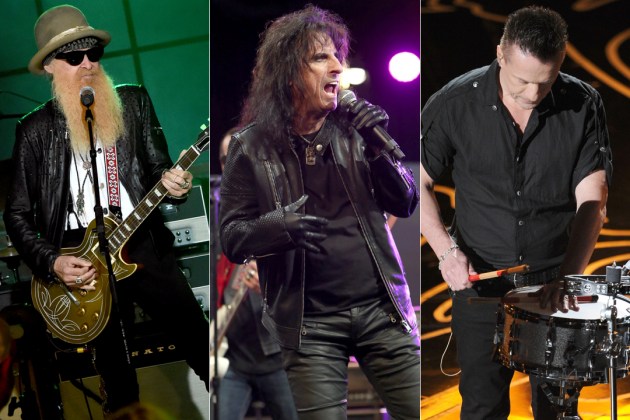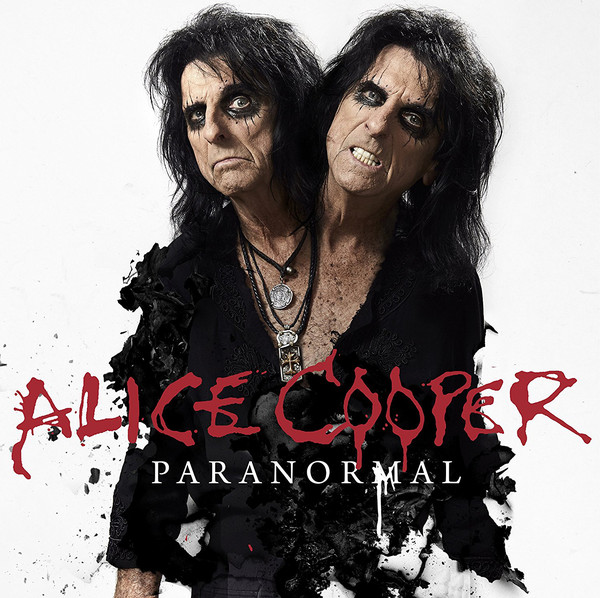Alice Cooper is one of these guys who have been around forever, 50-plus years to be more exact, yet other than a few hits like I’m Eighteen, No More Mr. Nice Guy, Poison and of course School’s Out, I really don’t know his music. But since I’m going to see Deep Purple together with Cooper at the end of August, his new album caught my attention when I spotted it coincidentally earlier today under new releases in Apple Music.
While I’ve always liked the aforementioned tunes, I’ve never further explored Cooper’s music. That being said, every time I encounter him, there is something I find intriguing – I can’t quite explain what it is. It’s not the guillotines, electric chairs, fake blood and other weird objects he uses during his live performances. That’s simply all part of his shock rock style, a genre he pretty much invented – BTW, kudos to any artist who creates their signature style!
So is his new album, which was released today, going to make me a fan? I’m not sure. After having listened through the 12 studio tracks a few times, what I can say with confidence is most of the music rocks nicely, but there’s no School’s Out material – except for the six additional live versions of old Cooper tunes, which include School’s Out, as well as No More Mr. Nice Guy.

A few things are remarkable about Paranormal. To start with, it is Cooper’s 27th studio release, if you include the first seven albums that were recorded when Alice Cooper still was known as a band rather than a single artist. Speaking of that band, two of the songs on the album feature four of the original members: Cooper (vocals, then known by his real name Vincent Damien Furnier), Michael Bruce (rhythm guitar), Dennis Dunaway (bass) and Neal Smith (drums). Additional guests include Deep Purple’s Roger Glover, ZZ Top’s Billy Gibbons and U2’s Larry Mullen.
In a Billboard story, Cooper explained his initial intention had been to make “another Alice Cooper album,” but the outcome was a concept. “Lyrically every single character has some sort of abnormal, paranormal problem going on and I didn’t have a name for the album, so Paranormal ended up sounding like the thing that cemented this all together,” Cooper noted. “It wasn’t paranormal on a level of ghosts or UFOs or Bigfoot; It was just paranormal on the fact (the characters) were next to normal. It certainly wasn’t normal.”
Paranormal opens with the title song, which features Roger Glover. The above Billboard story also includes a video breaking down the record. Commenting on the title track, he noted he wanted the album to have at least one “Cooperesque” song: “It’s a love song about a guy who’s on the other side. He’s dead and he comes to visit the girl, but there is that curtain between them where he can’t really touch her. She knows he’s there…It’s a creepy song, and we made it a little over the top…” I suppose you could say that – but what else would you expect?
Fallen In Love is a rock & roll tune with a nice ZZ Top vibe. Cooper explained for that reason he wanted to have Billy Gibbons – makes sense. It’s safe to assume this turned the rocker more into a ZZ Top-like tune. The song’s riff and solo definitely sound like classic Gibbons.
Holy Water is an unusual song for Cooper, which combines rock with a soul-like horn section. Apparently, when it initially was presented to him, he immediately liked the tune but didn’t feel the lyrics were something he’d ever sing. So he changed the words. Holy Water was also turned from what he called a rap tune into a rock song. The result is a song with a nice groove.
The Sound of A is the first tune that Cooper ever wrote back in 1967. At the time, his band was still called The Spiders. Dunaway, the bassist, had brought it in. “It was the most psychedelic song, because during the recording, everybody just went off on these guitar parts and things, and it just swirled,” Cooper noted. “It ended up being one of the most interesting songs on the album…totally forgot that I wrote it.”
Paranormal was produced by Bob Ezrin, who first worked with the Alice Cooper band in 1971, producing their third studio album Love It to Death. It included I’m Eighteen, the band’s first hit peaking at no. 21 on the U.S. Billboard Hot 100. Since then, Ezrin produced 13 additional Cooper records, including the new album. Ezrin has also worked with other top-notch artists, such as Lou Reed, Pink Floyd, Deep Purple and Peter Gabriel. In fact, he produced Deep Purple’s last album Infinite.
As noted above, in addition to the studio songs, Paranormal features six live tracks. They were captured last May during a show in Columbus, Ohio. Here’s a clip of my favorite one, the epic School’s Out.
Sources: Wikipedia, Billboard, YouTube















